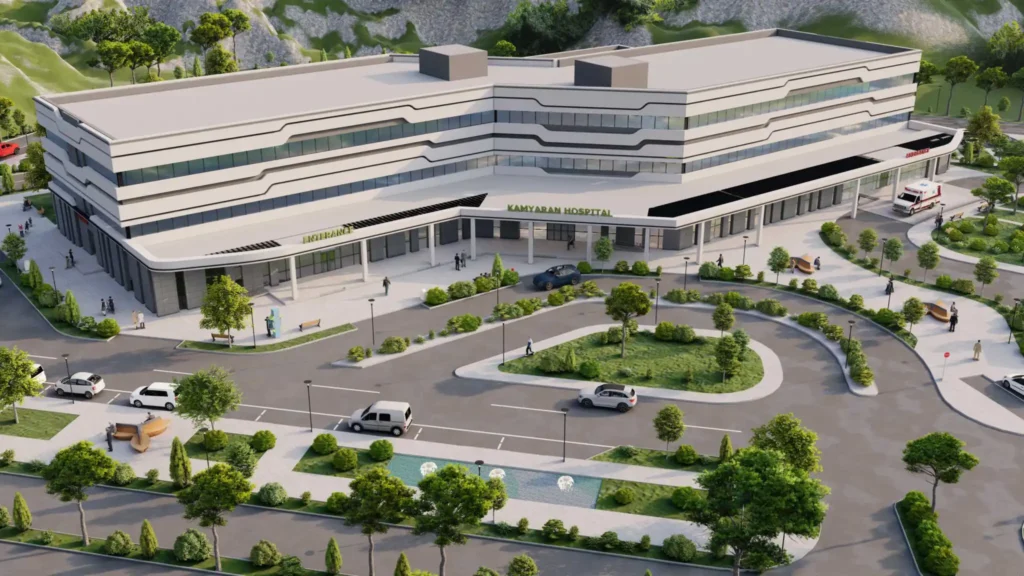
Client: Specialized Mother Company for the Development and Equipment of Health Centers and Medical Equipment in the Country
Location: Kurdistan Province – Kamyaran County
Date: 2018
Project Use: Medical
The project site consists of 7 land plots, with a total usable area of approximately 33,800 square meters after accounting for the underground water tunnel’s buffer zone. The site includes a main rectangular area of about 24,500 square meters and two additional square and trapezoidal areas of 5,000 and 4,300 square meters on the north and south sides, respectively. The total built area of the project is 11,000 square meters.
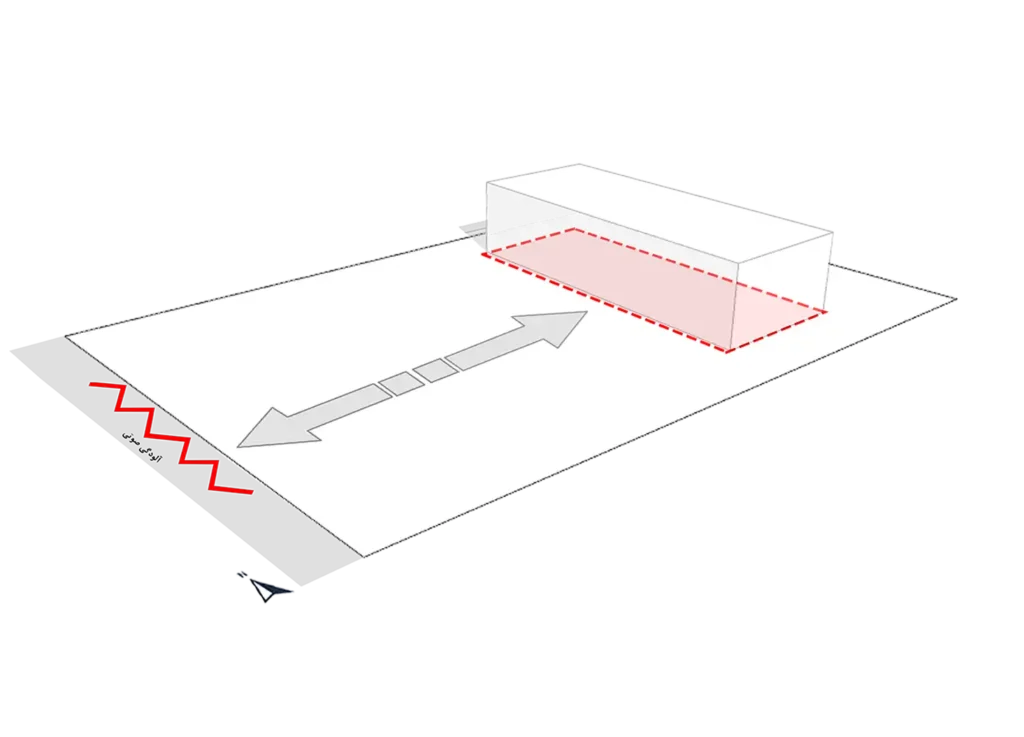
One of the most critical factors in designing and locating a hospital is how to access and position the medical center on the project site. To this end, the main building mass is located in the northeastern part of the site, which is the farthest point from the 34-meter-wide road on the west side of the site. This road currently serves as the main access route from the Besat residential area of Kamyaran to the village of Biar. The hospital is placed here to maximize the distance from the road and minimize noise pollution. By doing so, access to the Kamyaran medical center and hospital is separated from the noisy and busy thoroughfare through landscape design and vegetation coverage, following a defined hierarchy.
During the design process, considerations were made in the plan, section, and overall form to ensure maximum compatibility with the climate. For example, a slight rotation of the building towards the southeast allows the hospital to benefit more from the morning sunlight than the afternoon sun, initiating heat absorption earlier in the day. Rotating the building towards the southwest allows it to retain the cool morning air for a longer duration and keep the afternoon warmth until sunset. To achieve this goal in the project, a building with an elongated form and a larger southern facade was needed. Considering site constraints and orientation, the building was designed with a 12.5-degree deviation to have a smaller east-west facade.
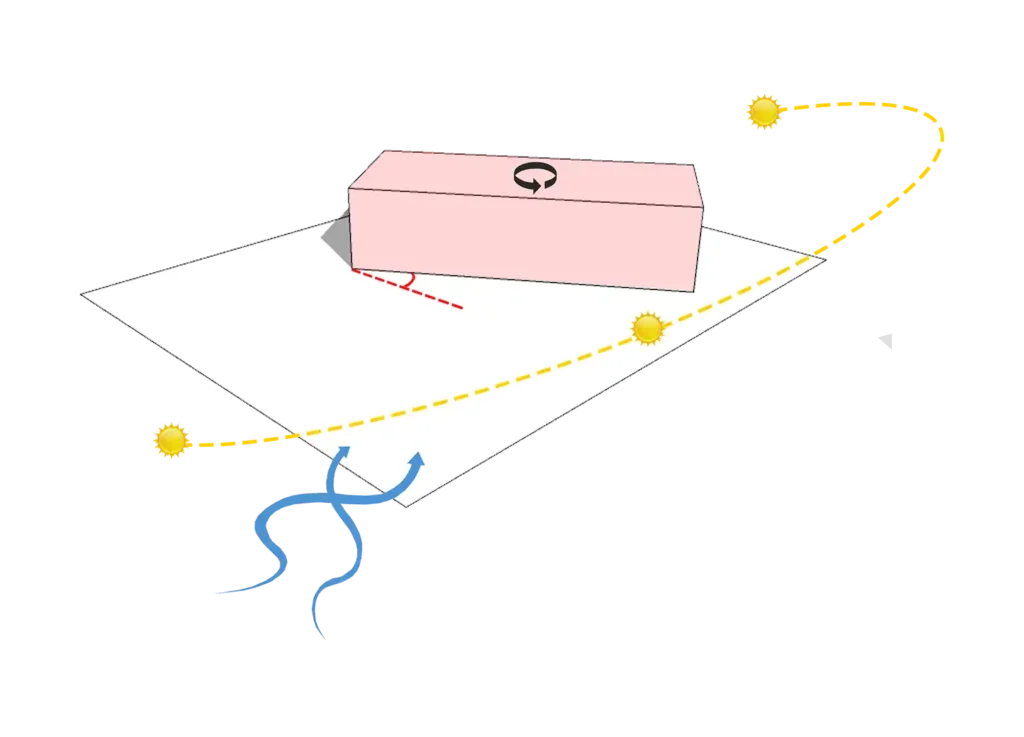
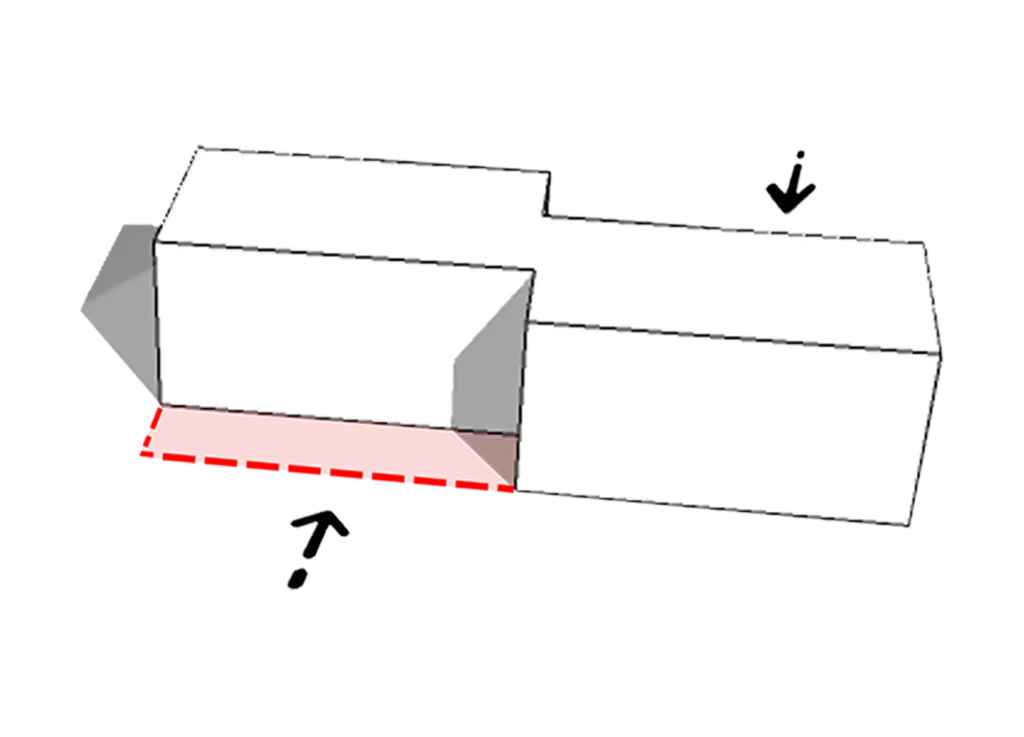
At the same time, the southern side was made larger to absorb more solar energy during the winter, which also contributes to improving the psychological well-being of hospitalized patients. A break was created to separate different sections of the hospital.
Longitudinal breaks in the design, made to differentiate sections, incorporated a bevel in the plan and form to prevent air drafts in the corners, ultimately achieving an aerodynamic shape. This shape minimizes pressure and suction by redirecting the prevailing disruptive winds from the southwest and west—common in the northern parts of the province—around the building.
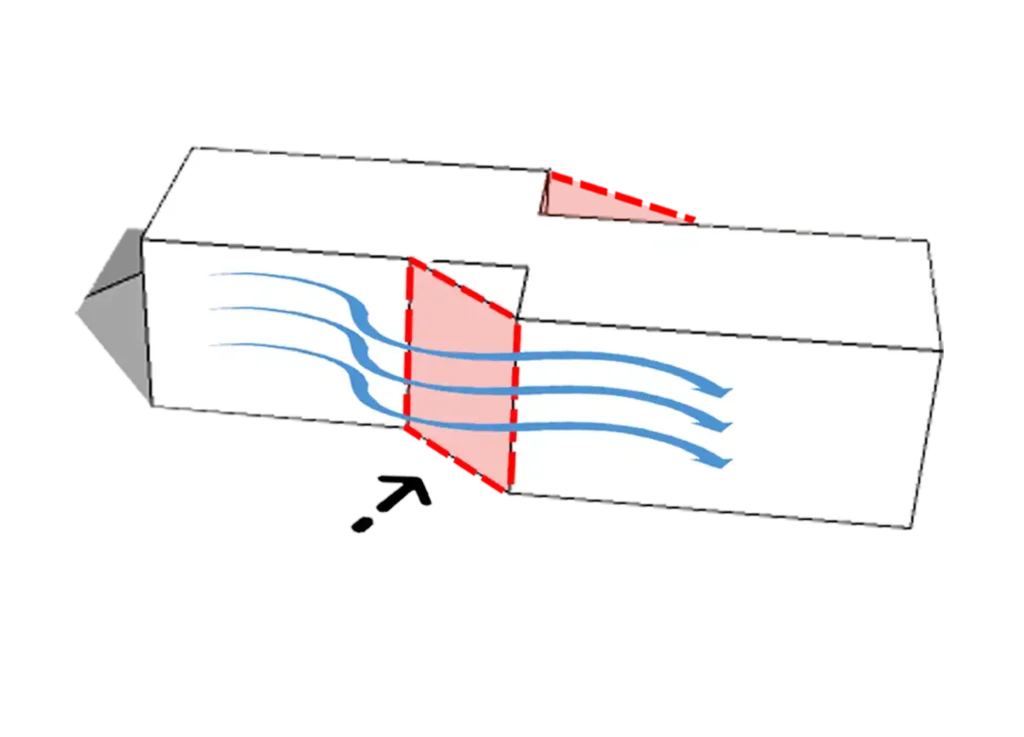
Creating projections for entry definition and readability.
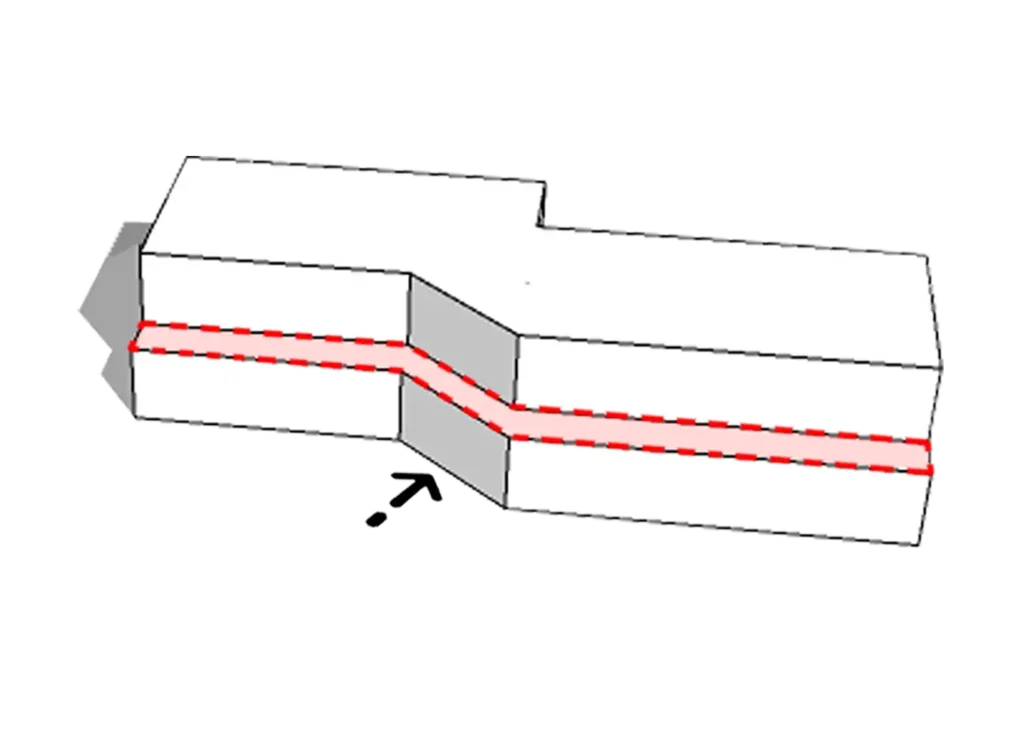
In designing the project, some of the main client requirements included: functional flexibility, potential for expansion, precise definition of vertical and horizontal connections between sections with minimal interference, reducing traffic and workforce, minimizing costs, maintaining green spaces covering 25% of the total land area, and taking necessary measures to prevent any environmental pollution (water, soil, and air). To achieve this functional connection, diagrams, and relationships of the building’s various components were prepared and designed to clarify horizontal and vertical connections and the functions of each part and main sections of the hospital.
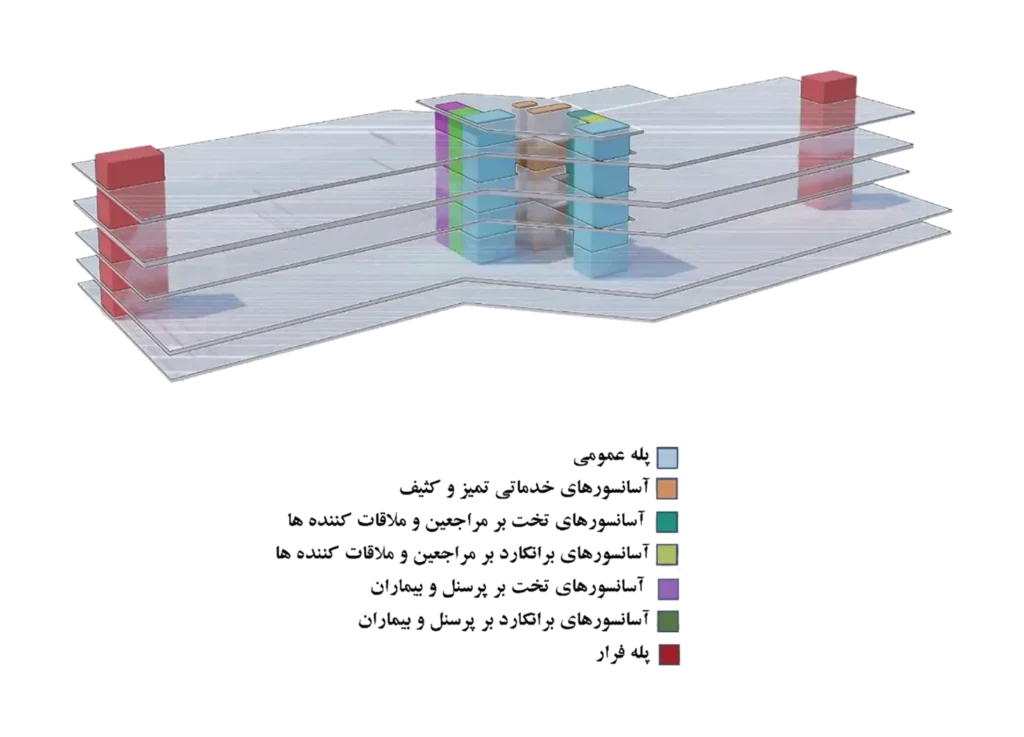
The hospital’s medical sections are as follows:
- Internal Medicine – Surgery – Pediatrics – Obstetrics
- NICU (Neonatal Intensive Care Unit) and NSCU (Newborn Special Care Unit)
- ICCU (Intensive Coronary Care Unit)
- ICU (Intensive Care Unit)
- Surgical Ward
- Emergency Department
- LDR (Labor, Delivery, Recovery) Ward
- Radiology Clinic
- Medical Diagnostic Laboratory
